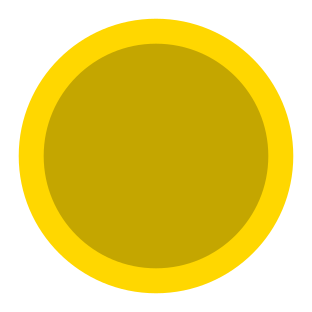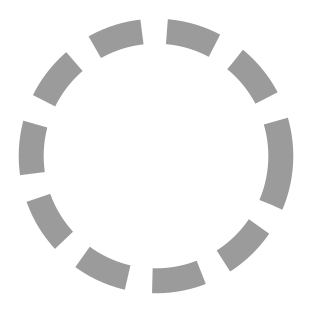We know how to store individual 1s and 0s on our disk. But those aren’t particularly meaningful by themselves. We’re now going to look at how we can represent a number in roons.
You already know several ways of representing a number:
| 1 | one | I | un | uno |
| 2 | two | II | deux | dos |
| 3 | three | III | trois | tres |
These representations are arbitrary. There’s nothing special about the letters t h r e e that means this many things: 

 .
.
So let’s invent our own mini language for representing numbers. Let’s call it “roonish”.
Words in English are composed of the letters A, B, C, etc. Words in roonish will be composed of the “letters” 0 and 1.
Let’s come up with some arbitrary words in roonish:
| English | roonish |
|---|---|
| cat | 100100011001 |
| apple | 000000101101 |
| house | 0101001011110 |
| one | 1010 |
| two | 111101110011110 |
| three | 1111 |
| … | … |
| one million, six hundred and three | 001 |
Remember, we can spell these words however we like — these are all equally valid.
… but they’re not equally convenient. Common concepts like “cat” or “two” should be something short and easy, not a long string like 111101110011110. Similarly, it’s silly for “one million, six hundred and three” to be a short word like 001, when we not going to use it often.
To simplify things, let’s forget about words like “cat” or “house” for now. Instead, we’re only going to define roonish words for numbers like “three” or “twenty-seven”, not arbitrary nouns
What we want is a scheme that will give us a sensible spelling for each number.
base ten
To come up with our scheme, let’s take inspiration from the way we normally write numbers — e.g. 53, 1,027, etc. This system is called base ten, which means:
- We use ten digits (0, 1, 2, …, 8, 9)
- The columns get bigger by a factor of ten from right to left.
For example, 234 means:
| column | value | amount |
|---|---|---|
| 100s | 2 | +200 |
| 10s | 3 | +30 |
| 1s | 4 | +4 |
This scheme has some nice properties:
- We can extend it forever — there’s no maximum limit
- Small numbers like
3are easy to write - As a bonus, it makes it easy to do things like addition, multiplication etc
There’s one problem: base ten uses the digits from 0-9, while roonish spells its words using only 1s and 0s. roonish can’t represent the digits 2-9. Therefore, we need to modify the scheme.
adapting the scheme
Base ten isn’t unique. We can actually write numbers in any base. For example, we could use base two instead, which means:
- We use two digits (0 and 1)
- The columns get bigger by a factor of two.
Instead of the columns going 1, 10, 100 etc, they go 1, 2, 4, 8, doubling each time. So 10011 means:
| column | value | amount |
|---|---|---|
| 16s | 1 | +16 |
| 8s | 0 | +0 |
| 4s | 0 | +0 |
| 2s | 1 | +2 |
| 1s | 1 | +1 |
Base two keeps all the nice properties of base ten — we can extend it forever, and it gives us sensible names for the numbers. And because it only uses 1s and 0s, it’s a perfect fit for roonish.
base 2 dictionary
So if we’re using base 2 as the scheme for our dictionary, our numbers end up looking like this:
| English | roonish |
|---|---|
| zero | 0 |
| one | 1 |
| two | 10 |
| three | 11 |
| four | 100 |
| five | 101 |
| six | 110 |
| seven | 111 |
| eight | 1000 |
| … | … |
Let’s apply this to a disk:
- The disk has the pattern





- … which represents the string 10110
- … which encodes the base two number 10110
- … which equals the number known in English as “twenty-two”.
In other words, we’ve stored the number “twenty-two” on our disk in a way that both we and roons can understand.
But what if we want to store things other than numbers? Next we’ll look at extending our scheme to include text.
continue
